18 Fierce Female Rock Stars Who Changed the Industry
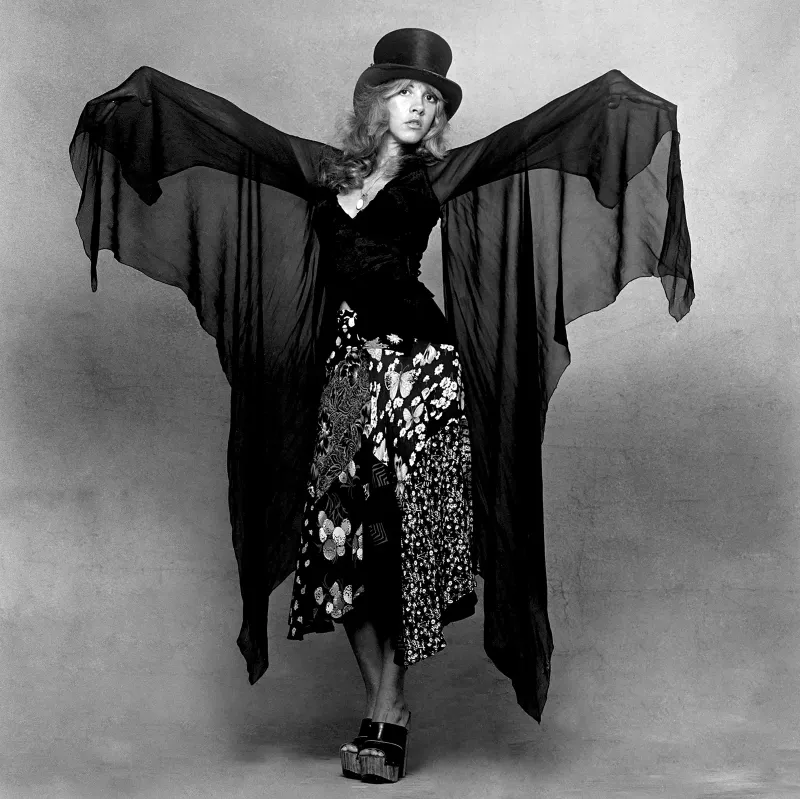
Rock music has often been dominated by men, but fierce female performers have shattered glass ceilings with electric guitars and powerful voices. These groundbreaking women didn’t just participate in rock music—they revolutionized it, fighting sexism and creating pathways for future generations. Their bold attitudes, musical innovations, and refusal to conform have permanently altered the landscape of rock and roll.
1. Janis Joplin
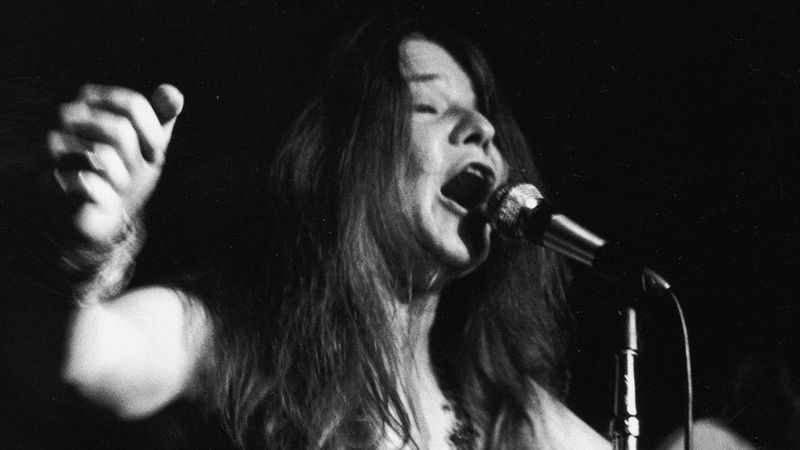
Before her tragic death at 27, Janis Joplin rewrote the rules for women in rock. Her raspy, emotional performances broke from the polished female vocalists of the 1960s, showing women could be just as gritty and powerful as men.
Fronting Big Brother and the Holding Company and later as a solo artist, Joplin’s bluesy wail on songs like “Piece of My Heart” delivered raw vulnerability that connected deeply with audiences. Her Woodstock performance cemented her legendary status.
Beyond her voice, Joplin’s free-spirited persona challenged feminine expectations of the era, making her a counterculture icon whose influence stretches across generations of female performers.
2. Joan Jett
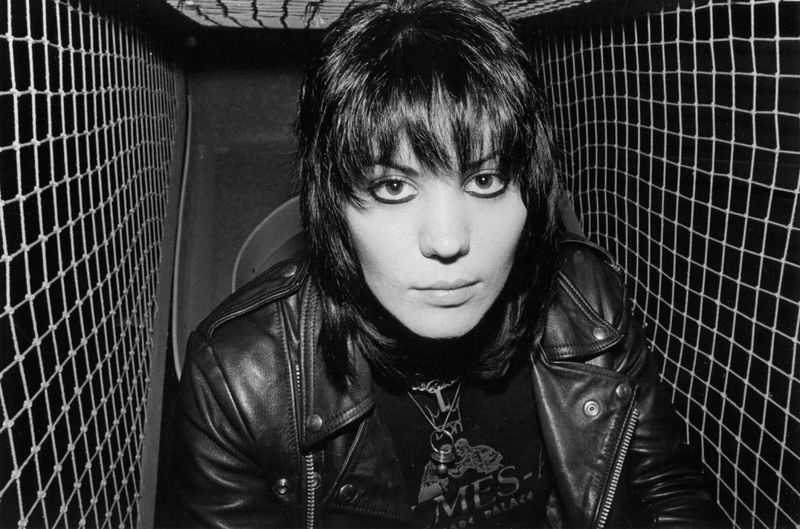
Starting with the all-female teenage band The Runaways, Joan Jett smashed stereotypes about women in hard rock. When record labels rejected her solo work, she formed Blackheart Records, becoming one of the first female artists to own her label.
Her anthem “I Love Rock ‘n Roll” topped charts for eight weeks, proving women could dominate mainstream rock. With her trademark black hair, leather jacket, and no-nonsense attitude, Jett created a visual and musical template for generations of female rockers.
Her induction into the Rock and Roll Hall of Fame in 2015 recognized her groundbreaking career as both performer and businesswoman who never compromised her vision.
3. Stevie Nicks
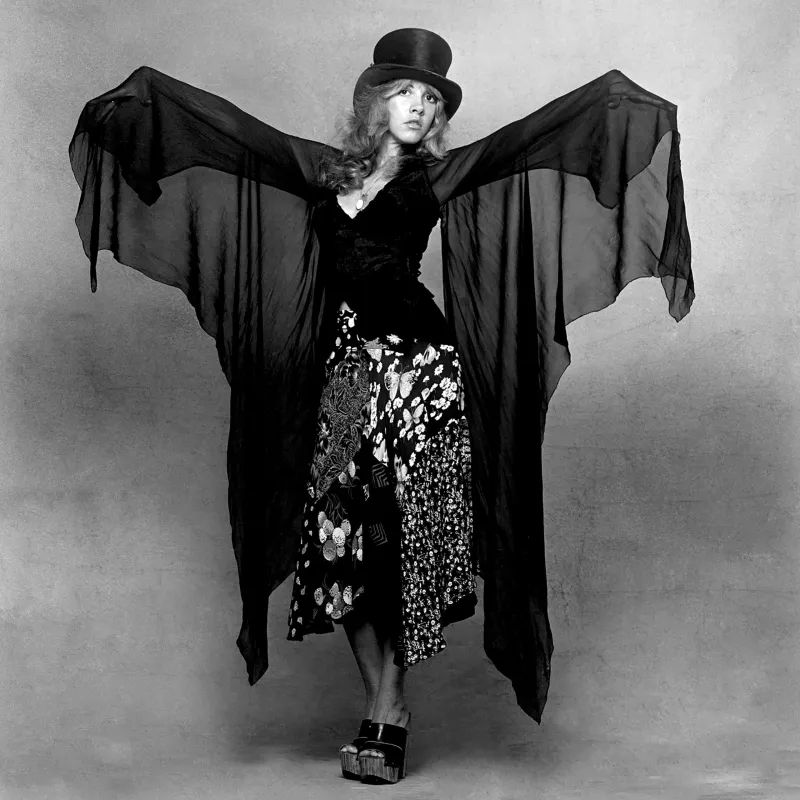
Twirling in flowing shawls while delivering haunting vocals, Stevie Nicks transformed from Fleetwood Mac’s co-vocalist to a cultural phenomenon. Her distinctive songwriting on classics like “Rhiannon” and “Landslide” brought a feminine mystique to rock that had rarely been seen before.
The first woman inducted into the Rock and Roll Hall of Fame twice (with Fleetwood Mac and as a solo artist), Nicks pioneered the path for female songwriters to express complex emotions in rock music. Her bohemian witch aesthetic influenced fashion as much as her voice shaped music.
Through public struggles with relationships and addiction, Nicks maintained creative control of her career, becoming rock’s enduring priestess whose influence spans from 70s rock to modern pop.
4. Debbie Harry
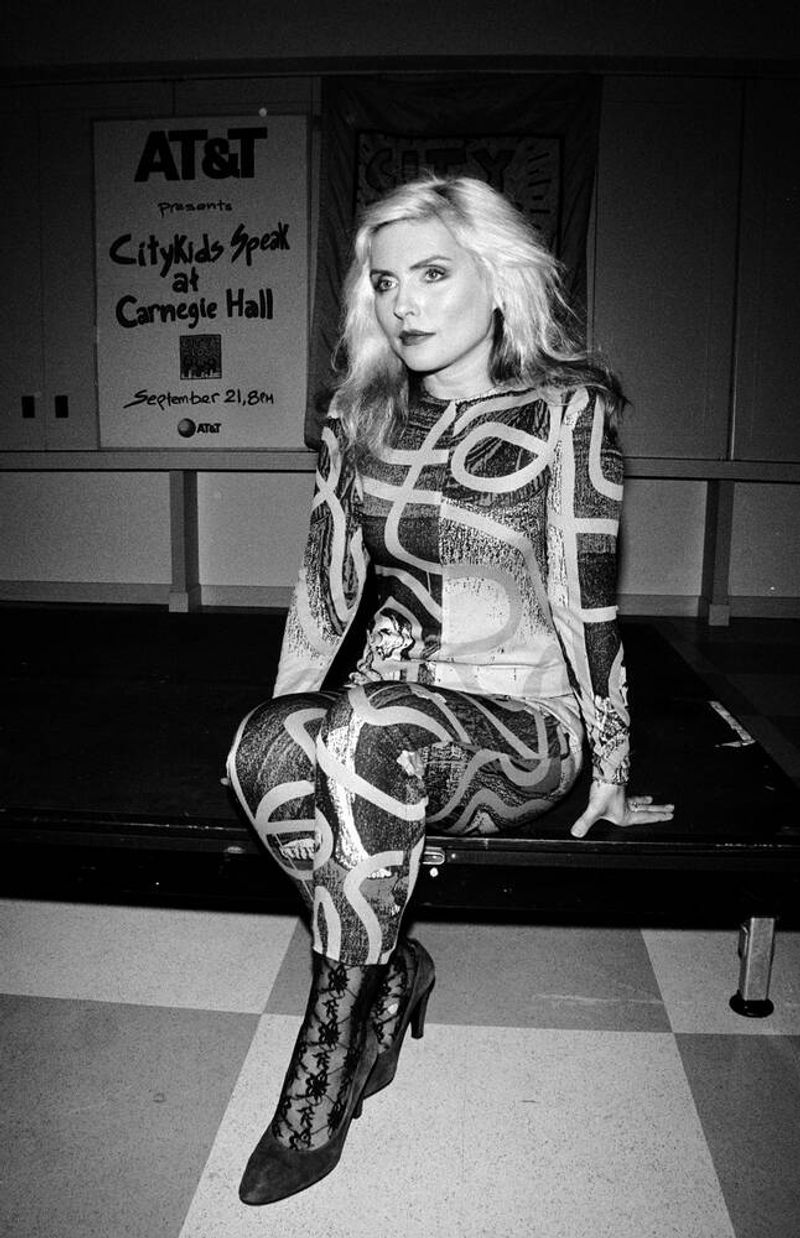
As the frontwoman of Blondie, Debbie Harry merged punk’s edge with pop accessibility, creating a blueprint for generations of female singers. Her cool detachment and platinum blonde hair became iconic, but her musical innovations proved even more significant.
Harry and Blondie helped introduce hip-hop to mainstream audiences with “Rapture” and brought new wave to American radio. Unlike many female performers of her era, Harry co-wrote many of Blondie’s biggest hits, including “Heart of Glass” and “Call Me.”
Her fearless mixing of punk, disco, reggae, and rap elements showed women could be experimental musical innovators, not just vocalists. At CBGB’s and beyond, Harry redefined what a female rock star could be.
5. Patti Smith

Armed with poetry and three chords, Patti Smith created a revolutionary fusion of literature and rock on her landmark 1975 album “Horses.” Her androgynous appearance and intellectual approach challenged the idea that women in rock needed to be conventionally attractive or musically simple.
Smith’s raw, improvisational performances brought the intensity of beat poetry to rock music. Her collaboration with photographer Robert Mapplethorpe resulted in one of rock’s most iconic album covers, cementing her visual as well as musical legacy.
Beyond music, Smith’s memoir “Just Kids” won the National Book Award, proving female rockers could transcend categories and be recognized as serious artists across multiple disciplines.
6. Suzi Quatro
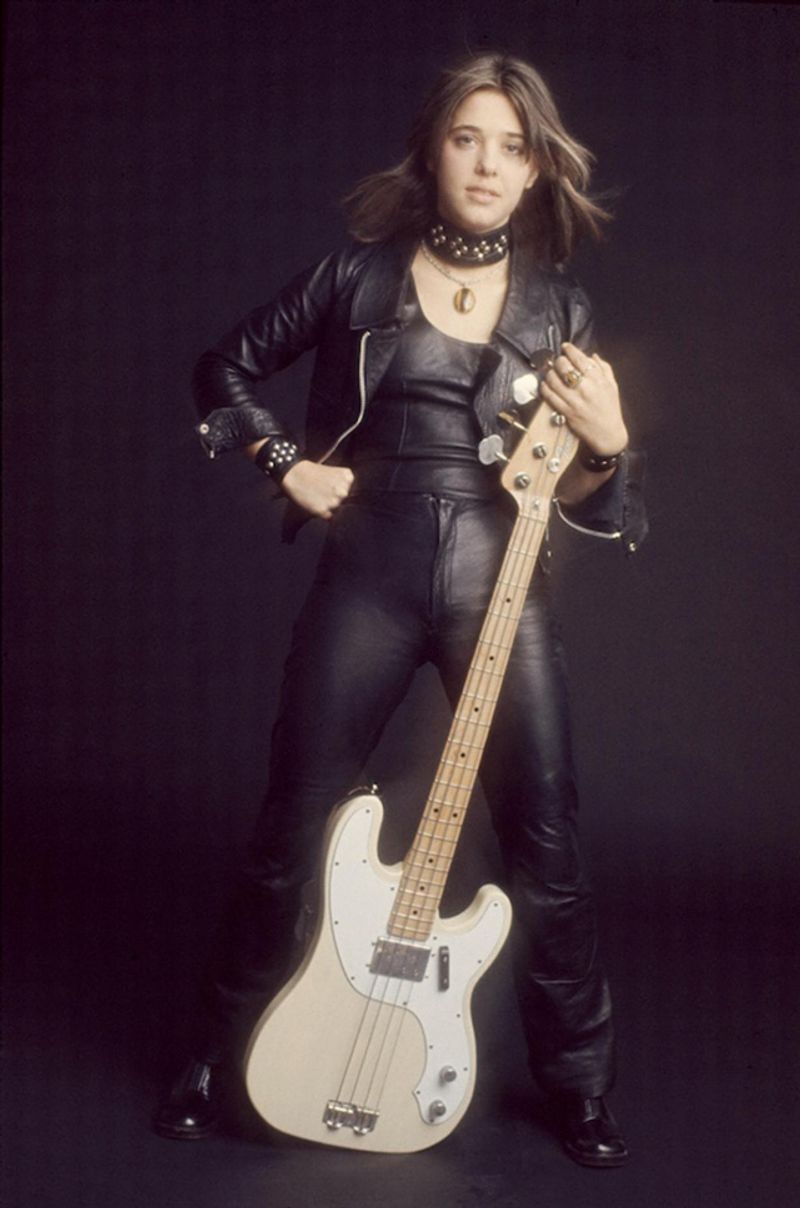
Before Joan Jett or Chrissie Hynde, Suzi Quatro proved women could play bass, lead bands, and rock as hard as men. As one of the first female bassists to become a major rock star, her 1973 hit “Can the Can” topped charts worldwide, shocking audiences who’d never seen a woman fronting a rock band while playing an instrument.
Her leather jumpsuit became her trademark, rejecting the flowing dresses of female folk singers for a tough, androgynous look. Quatro’s influence extended to television when she played Leather Tuscadero on “Happy Days,” bringing rock attitude to mainstream America.
Though often overlooked in rock histories, Quatro sold over 50 million records and opened doors for every woman who picked up a bass guitar after her.
7. Chrissie Hynde

Forming The Pretenders in 1978, Chrissie Hynde created a perfect synthesis of punk energy and classic songcraft. Her distinctive voice—both tough and vulnerable—became one of rock’s most recognizable instruments on hits like “Brass in Pocket” and “Back on the Chain Gang.”
Unlike many female performers, Hynde maintained complete artistic control of her band, writing songs, playing rhythm guitar, and producing records. Her no-nonsense attitude extended to her stage presence, where she focused on musicianship rather than spectacle.
Through tragedy (two original Pretenders died of drug-related causes) and changing trends, Hynde never compromised her vision, creating one of rock’s most consistent and respected catalogs spanning over four decades.
8. Tina Turner

After escaping an abusive marriage to Ike Turner, Tina reinvented herself as a solo rock artist in her 40s—an age when most female performers were considered past their prime. Her 1984 album “Private Dancer” sold over 20 million copies, proving female rockers could thrive at any age.
Turner’s volcanic live performances set new standards for female rock singers. Her mini-skirts and wild dancing challenged age and gender expectations, while her powerful vocals on “What’s Love Got to Do With It” and “Better Be Good to Me” showed unmatched emotional range.
Beyond music, Turner’s survival story became an inspiration to abuse victims worldwide. Her autobiography and biopic demonstrated how women could reclaim their narratives in a male-dominated industry.
9. Grace Slick
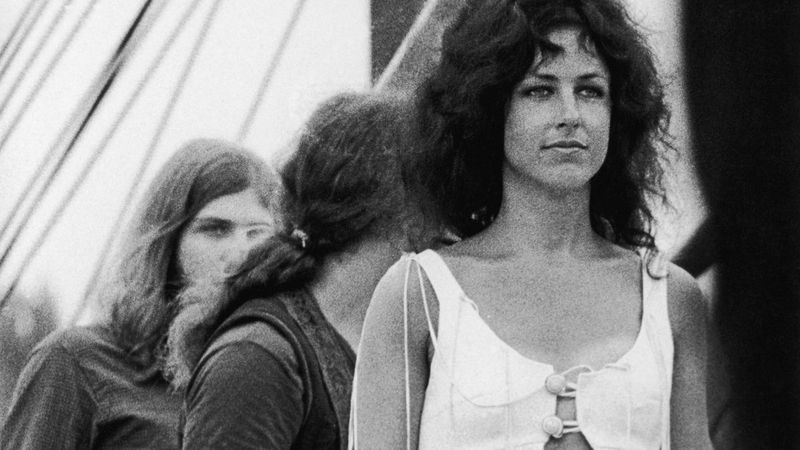
Standing six feet tall in flowing clothes with a voice that could peel paint, Grace Slick helped define psychedelic rock as Jefferson Airplane’s frontwoman. Her performances at Woodstock and Monterey Pop Festival showcased a female vocalist who could be as powerful and threatening as any male counterpart.
Slick’s surreal lyrics on “White Rabbit” and “Somebody to Love” brought literary references and drug culture into mainstream rock. Unlike the folk singers of her era, Slick embraced the full power of electric instruments and studio effects.
Throughout her career, Slick remained outspoken on political issues, once planning to spike President Nixon’s tea with LSD. Her refusal to act like a “proper lady” expanded the possibilities for women in rock.
10. Pat Benatar

With four Grammy wins and a classically trained voice, Pat Benatar brought technical precision to rock that few could match. Her powerful soprano on anthems like “Hit Me With Your Best Shot” and “Love Is a Battlefield” proved women could dominate the emerging MTV era.
Benatar fought constant battles with her record label over her image, refusing to be sexualized or wear revealing clothing. Instead, she created her own iconic look with short spiky hair and spandex that balanced femininity with strength.
As one of the first female artists to receive heavy rotation on MTV, Benatar’s theatrical videos for songs like “You Better Run” (the second video ever played on the network) helped establish the visual language of rock in the 1980s.
11. Heart’s Ann and Nancy Wilson
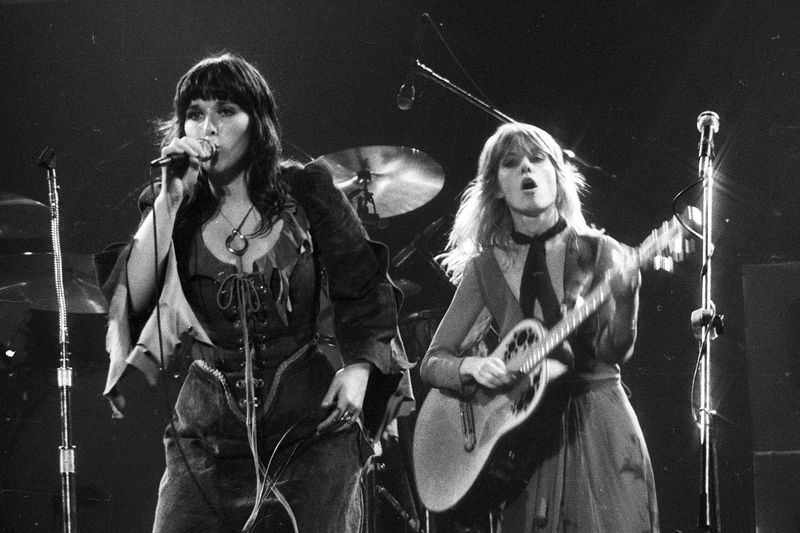
As the core of Heart, sisters Ann and Nancy Wilson conquered the male-dominated world of hard rock in the 1970s. Ann’s powerful vocals on “Barracuda” and “Crazy on You” rivaled any male singer, while Nancy’s guitar work proved women could handle complex solos and heavy riffs.
The sisters wrote most of their own material, controlling their musical destiny in an era when female performers were often just interpreters of men’s songs. Their 1976 debut “Dreamboat Annie” sold over a million copies despite initial rejection from American record labels.
Through the 1980s power ballad era and into their Rock Hall of Fame induction in 2013, the Wilsons maintained artistic integrity while adapting to changing trends, creating a blueprint for female rock longevity.
12. Kim Gordon
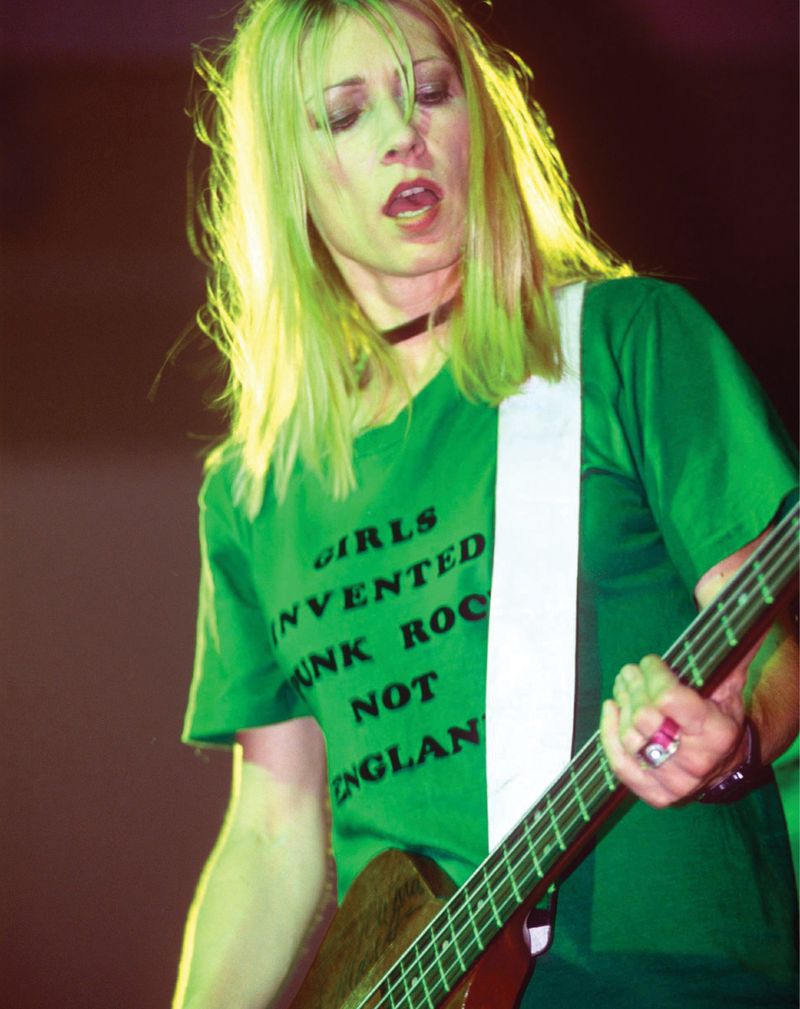
As bassist and vocalist for Sonic Youth, Kim Gordon rejected rock star clichés in favor of artistic experimentation. Her deadpan vocal style and unconventional bass playing helped define alternative rock years before the genre had a name.
Gordon’s lyrics on songs like “Kool Thing” directly addressed sexism in rock culture, while her visual art background brought conceptual depth to Sonic Youth’s presentation. Unlike many female performers, Gordon never played up her sexuality, focusing instead on sonic innovation and artistic integrity.
Beyond music, Gordon’s fashion line X-Girl and memoir “Girl in a Band” established her as a cultural force whose influence extends from music to fashion, art, and literature. Her fearless approach inspired countless women to form bands on their own terms.
13. Poly Styrene
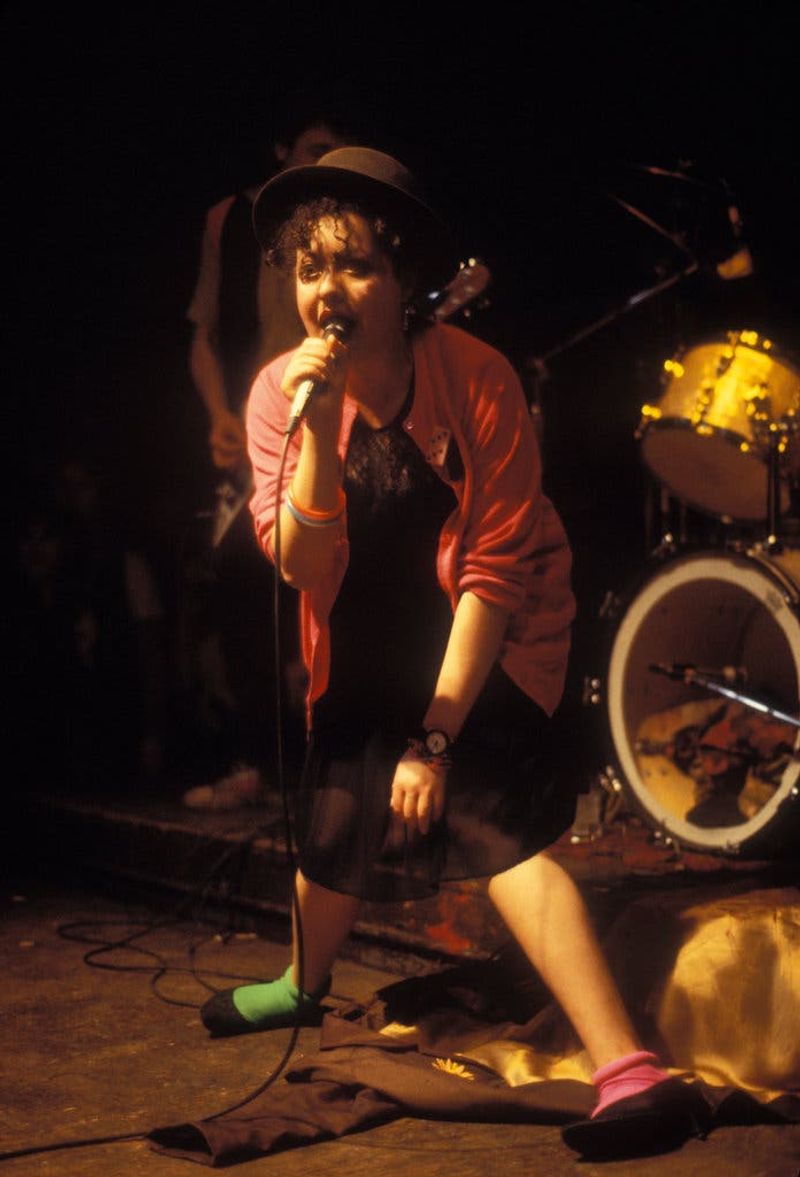
With braces on her teeth and day-glo outfits, Poly Styrene of X-Ray Spex rejected punk’s masculine aggression and conventional beauty standards. Her powerful voice shouted anti-consumerist lyrics on the band’s 1978 album “Germfree Adolescents,” creating feminist anthems like “Oh Bondage! Up Yours!”
As one of the few women of color in the early punk scene, Styrene (born Marianne Elliott-Said) brought racial diversity to a predominantly white genre. Her mixed Somali-British heritage informed her outsider perspective on British society.
Styrene’s playful approach to serious topics like genetic engineering and consumer culture influenced generations of riot grrrl bands. Though her career was cut short by her early death, her brief creative explosion permanently altered punk’s DNA.
14. Courtney Love
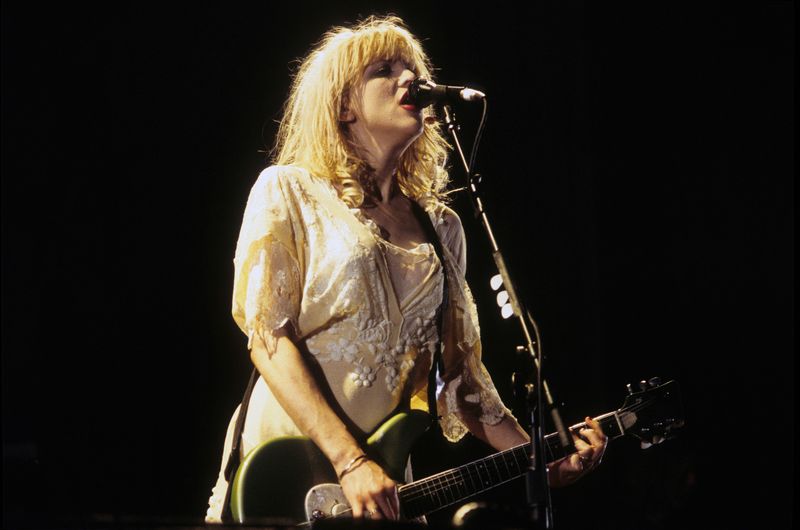
Fronting Hole with a torn prom dress and smeared lipstick, Courtney Love created a visual and sonic language for female rage in the grunge era. Her raw vocals and confrontational stage presence on albums like “Live Through This” challenged the male domination of 1990s alternative rock.
Love’s lyrics tackled taboo subjects like sexual assault, beauty standards, and motherhood with unflinching honesty. Despite media attempts to define her primarily through her relationship with Kurt Cobain, Love established herself as a significant songwriter and cultural figure in her own right.
Her willingness to be messy, angry, and imperfect on stage opened possibilities for female performers to express emotions beyond the pretty and pleasing. Love showed that women in rock could be complicated anti-heroes, not just role models.
15. Kathleen Hanna
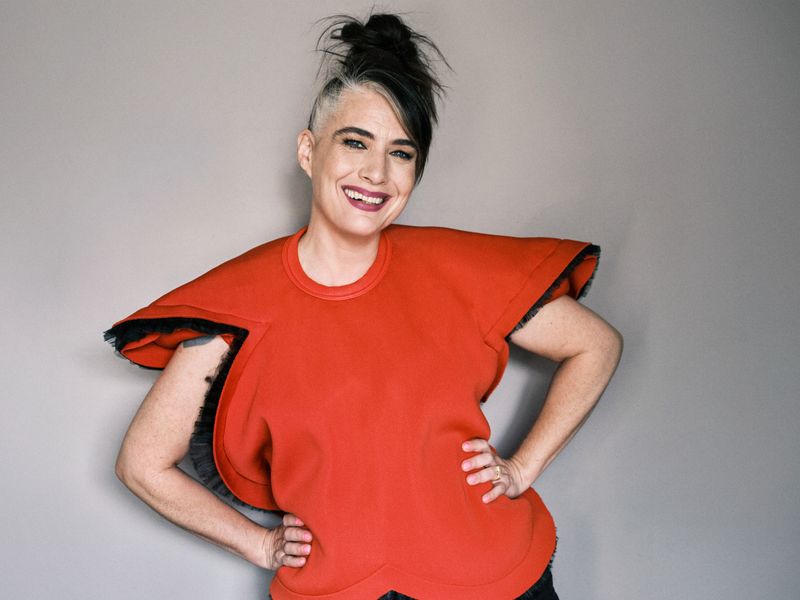
Screaming “Girls to the front!” at Bikini Kill shows, Kathleen Hanna created safe spaces for women at punk concerts and launched the riot grrrl movement. Her confrontational performances addressed sexual assault, domestic violence, and patriarchy with unprecedented directness in the early 1990s underground scene.
Hanna’s DIY feminist zines and manifestos extended her influence beyond music into political organizing. Later, with Le Tigre, she brought feminist politics to electronic dance music, proving political music could also be fun and danceable.
Her documentary “The Punk Singer” chronicled both her artistic innovations and her battle with Lyme disease, creating a template for female artists to document their own stories. Hanna’s influence stretches from punk basements to academic gender studies programs.
16. Siouxsie Sioux
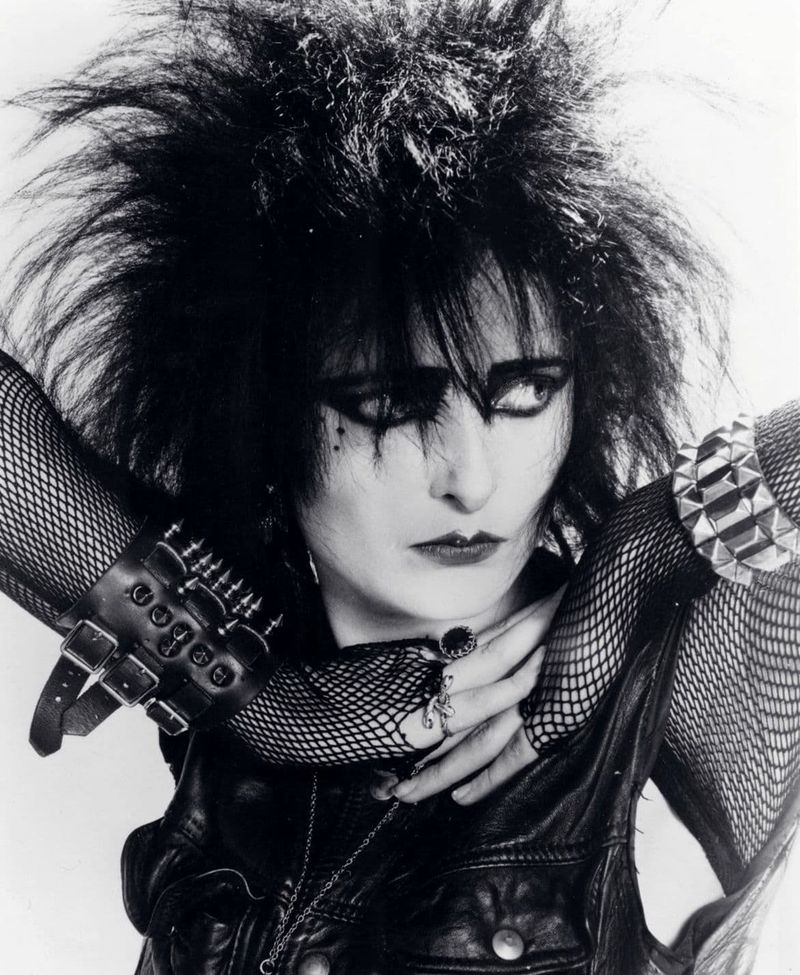
Beginning at the first British punk shows and evolving into post-punk royalty, Siouxsie Sioux created a template for gothic rock with her band The Banshees. Her theatrical makeup, architectural hair, and commanding stage presence influenced generations of alternative performers regardless of gender.
Sioux’s distinctive voice could shift from banshee wail to seductive croon, while her lyrics explored psychological darkness, fairy tales, and sexual taboos. Her willingness to experiment led the Banshees through multiple musical phases while maintaining a distinctive identity.
Unlike many female vocalists, Sioux maintained complete control of her image and artistic direction. From 1970s punk clubs to headlining festivals, she never compromised her artistic vision or adapted to male expectations of how women should perform.
17. PJ Harvey
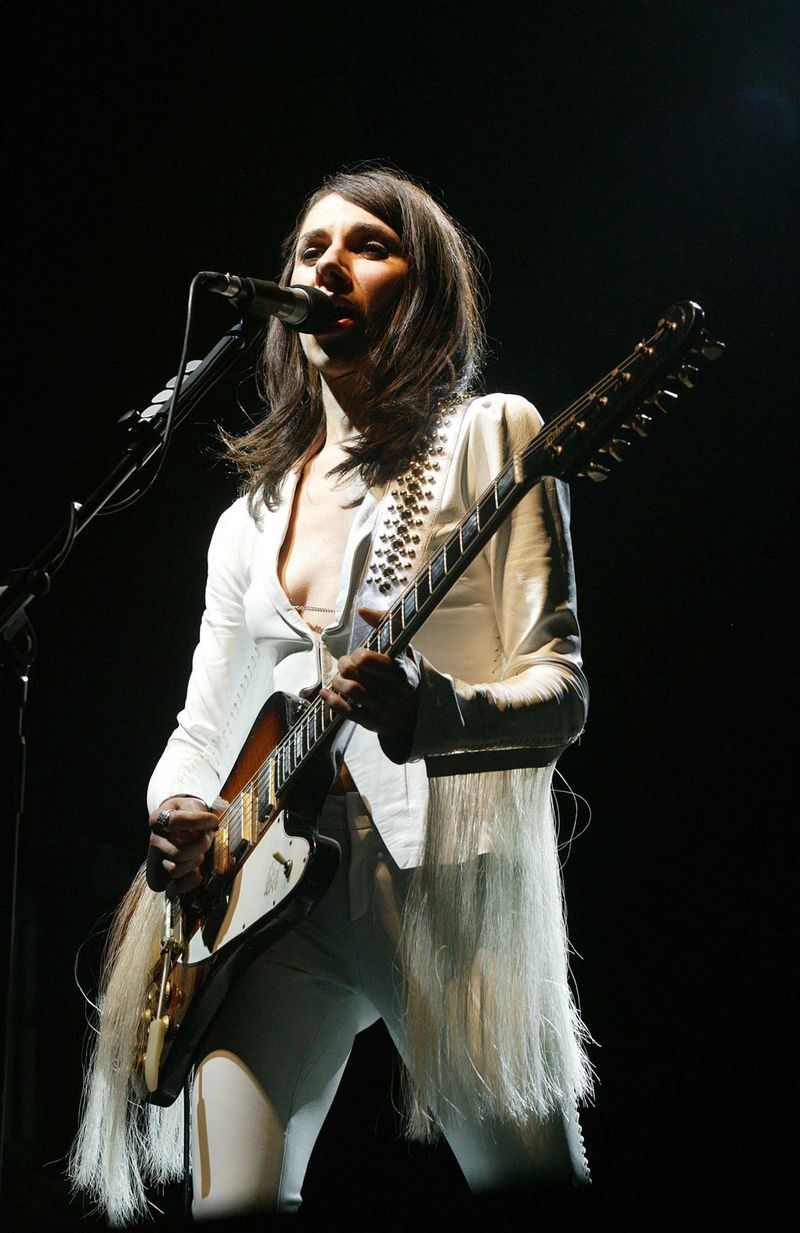
Since her 1992 debut “Dry,” PJ Harvey has reinvented herself with each album while maintaining absolute artistic control. Her raw early work challenged feminine stereotypes with its sexual frankness and unfiltered emotion, while later albums like “Let England Shake” addressed war and national identity.
Harvey’s vocal range stretches from whispers to screams, matching her musical evolution from stripped-down guitar rock to complex orchestral arrangements. The only artist to win the Mercury Prize twice, Harvey has balanced critical acclaim with artistic integrity throughout her career.
Unlike many female artists pushed to maintain a consistent image, Harvey transforms herself visually with each project. From gothic Victorian dresses to tailored suits, she uses fashion as another tool for artistic expression rather than market appeal.
18. Sister Rosetta Tharpe
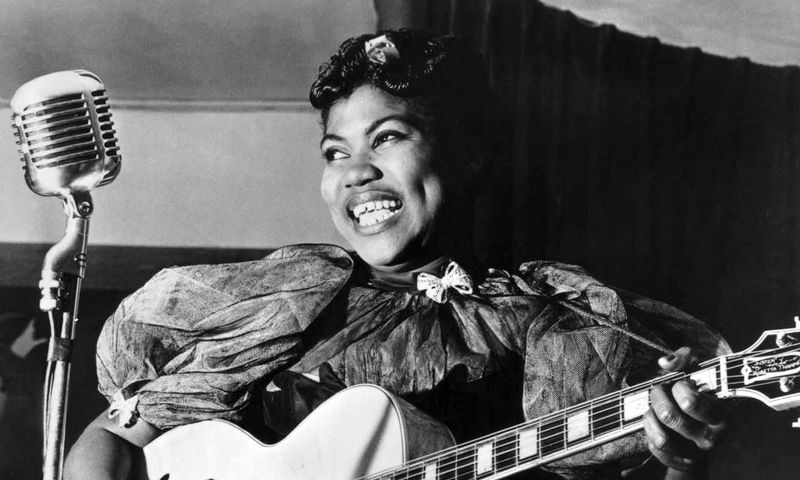
Decades before Elvis or Chuck Berry, Sister Rosetta Tharpe was playing electric guitar and performing with a flamboyant style that would define rock and roll. Her fusion of gospel lyrics with distorted guitar and rhythmic innovation in the 1930s and 1940s created the blueprint for rock music.
As a Black woman playing guitar in segregated America, Tharpe overcame double discrimination to influence Elvis Presley, Little Richard, and Johnny Cash. Her hit “Strange Things Happening Every Day” is considered by many music historians to be the first rock and roll record.
Though long overlooked, Tharpe’s 2018 induction into the Rock Hall of Fame finally acknowledged her foundational role. Her performances on songs like “Up Above My Head” showcase guitar techniques that male rock pioneers would adopt years later.

Comments
Loading…